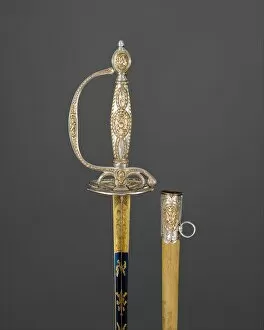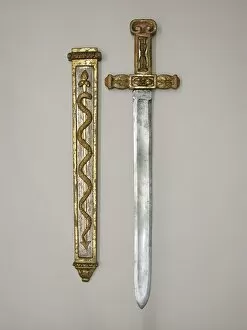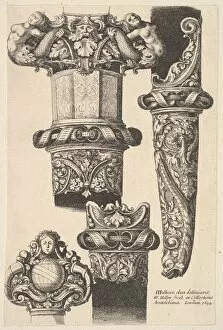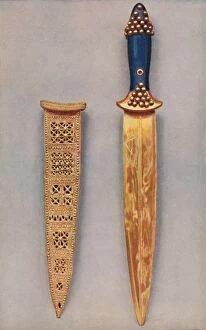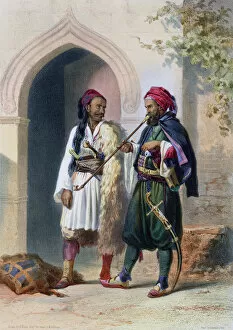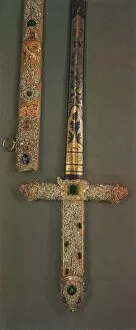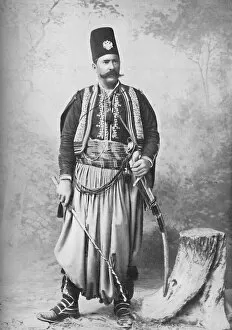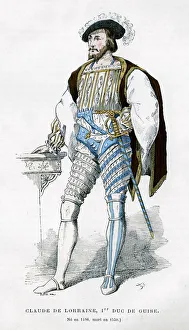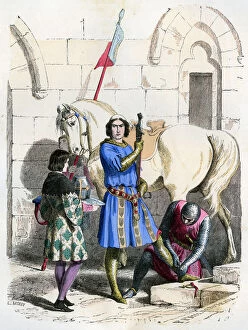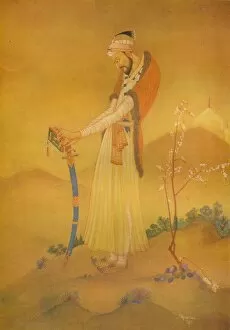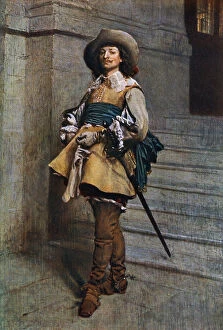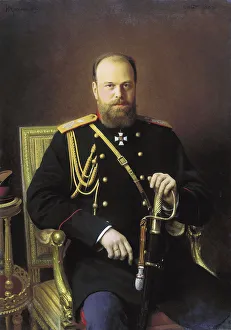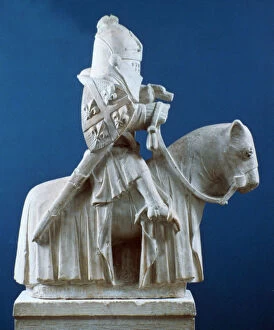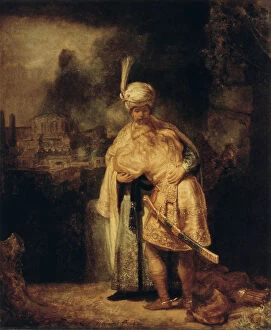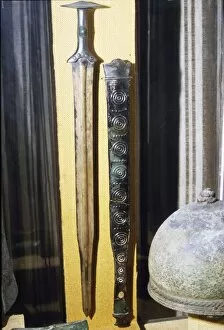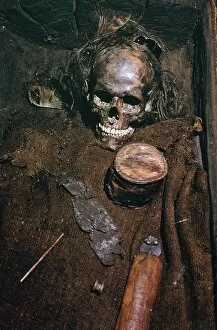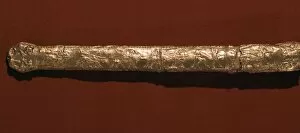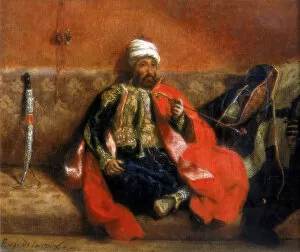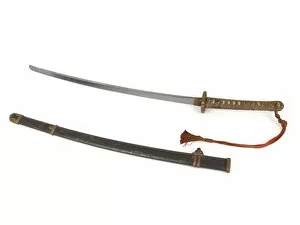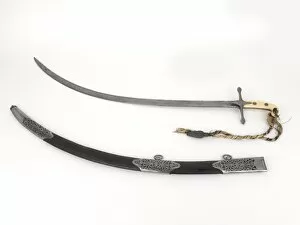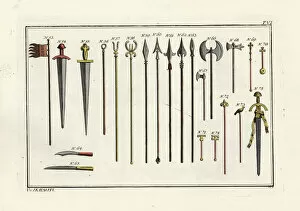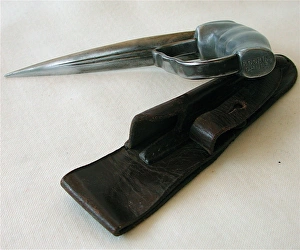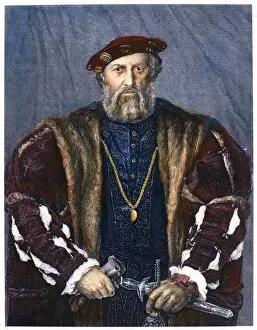Scabbard Collection (page 5)
"The Scabbard: A Symbol of Power and Protection" In various cultures throughout history
All Professionally Made to Order for Quick Shipping
"The Scabbard: A Symbol of Power and Protection" In various cultures throughout history, the scabbard has played a significant role in both military traditions and royal ceremonies. From the Army celebrating their Queen's birthday to ancient tales of valor, this humble accessory holds great importance. One such example is depicted in an engraving showcasing Coriolanus' habit in Shakespeare's tragedy. The scabbard, accompanying his sword, represents not only his warrior status but also his adherence to honor and discipline. Moving on to regal splendor, we find the Regalia of Scotland adorned with majestic treasures like the Sceptre and Sword of State. Among them lies the scabbard, symbolizing power wielded by those entrusted with protecting their nation's sovereignty. Stepping back further into history, we encounter armor from the 16th century that showcases knights proudly donning their swords sheathed within intricately designed scabbards. These pieces reflect both functionality and artistic craftsmanship. Transitioning to more modern times, World War I introduces us to German Mauser Gewehr M 98 rifle bayonet with its sturdy scabbard. This combination served as a soldier's faithful companion during tumultuous battles fought on unforgiving fronts. Diving into underwater realms reveals another unique application for a steel-bladed diver's knife crafted by Siebe Gorman. Its reliable scabbard ensured safe storage while exploring mysterious depths where danger lurked beneath tranquil waters. Legends come alive when Excalibur enters our narrative - King Arthur's mythical sword acquired from Lady of Lake - housed securely within an enchanted scabbard said to grant invincibility during battle against evil forces. Traveling even further back in time brings us face-to-face with Tutankhamun's tomb treasures; among them lies a dagger sheathed within gold inlaid with lapis lazuli – a testament to ancient Egyptian craftsmanship and reverence for protection through divine symbols.




